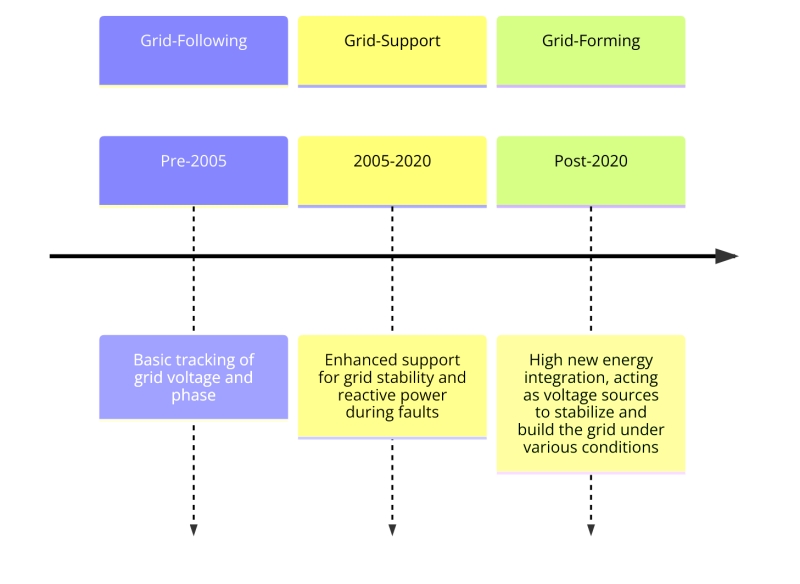The energy storage industry is witnessing a significant shift with the advent of liquid-cooled technologies. These innovative systems are designed to manage heat more effectively than traditional methods, enhancing battery performance and longevity. As the demand for reliable and efficient energy storage solutions grows, liquid-cooled technology, particularly battery pack liquid cooling, is becoming indispensable, promising to drive future advancements in the sector.
Let’s delve into the specifics of these trends and understand how they are shaping the future of energy storage technology.
The global energy storage system market is projected to grow steadily from 2024 to 2031, with an estimated compound annual growth rate of about nine percent. In 2023, the market was valued at $256 billion, reflecting a significant increase in demand and investment.
The market is diversifying towards centralized, distributed, smart strings, and high-voltage cascade systems:
Key trends include:
The United States is expected to see a record-breaking year for energy storage, with Wood Mackenzie forecasting 45% growth in 2024, following a 100% growth from 2022 to 2023. This indicates a robust future for energy storage technologies.
The adoption of high-voltage cascade energy storage systems is expected to rise due to their ability to provide direct high-voltage output, reducing system losses and improving efficiency.
The outlook for 2024 suggests a significant expansion in energy storage systems, particularly with the integration of AC/DC systems, high-voltage cascade systems, and station-type energy storage systems.
Grid-connected converter control technology has evolved, with current systems needing to function as voltage sources to build and maintain grid stability.
Emerging technologies such as compressed air, superconducting magnets, underground pumped storage, and hydrogen storage are in various stages of development, contributing to the diversification of energy storage solutions.
Station-type energy storage system integration, which houses core equipment within a building, offers solutions to issues like high costs, complex operations, and environmental adaptability.
Key technologies include lithium-ion, thermal, pumped hydro, liquid air, and green hydrogen storage, with liquid-cooled systems noted for top efficiency and safety. As renewable energy grows, storage needs have expanded from 100MWh to GWh scales, requiring better integration and monitoring.
Advancements in Energy Storage Batteries
Focus is on large core development to enhance reliability and solve production issues. Sodium-ion batteries, while less dense energetically, are cost-effective and perform well at high temperatures but need more development for wider use.
Evolution of Converter Technology

Liquid-cooled systems offer rapid and precise temperature control, efficient heat exchangers, reduced temperature differences, and adaptability to various applications. These benefits make them a preferred choice for large-scale energy storage.
The importance of battery pack liquid cooling cannot be overstated. This technology plays a crucial role in managing thermal runaway—a process where high temperatures, overcharging, or internal short circuits can trigger uncontrollable chemical reactions within a battery. Liquid cooling systems are designed to inhibit thermal diffusion, slowing down the spread of heat within the battery pack and minimizing potential damage. This ensures consistent performance and longevity of energy storage systems, making liquid-cooled battery packs indispensable for large-scale applications.
BMS are crucial for preventing thermal runaway, which can lead to fires or explosions. Methods include:
Looking at the development trend, with continuous progress in battery technology, the application of new battery materials, and the intelligent development of battery management systems, the risk of thermal runaway in BMS is expected to reduce.
Active equalization in the BMS is particularly important for industrial and commercial energy storage. These industries often try to recover investment costs quickly and must adapt to policy changes. They design optimal operational strategies based on tariff policies so that they can visualize and settle daily revenues on a management platform.
Despite these developments, challenges remain due to factors like battery aging and external environmental changes. These factors can increase battery state uncertainty, making thermal runaway prevention and control more difficult. Therefore, continuous attention, research, and practice in managing thermal runaway in energy storage BMS are required to improve system safety and reliability.
Despite the higher initial equipment costs, the overall economic advantage of liquid-cooled systems is significant due to improved operational efficiency, reduced system losses, and integration of functions like reactive power compensation.
Continuous attention, research, and practice are required to manage challenges such as battery aging and external environmental changes, which can impact system reliability and safety.
The future of energy storage lies in the advancements and adoption of liquid-cooled systems. With their superior thermal management and efficiency, these systems are set to play a crucial role in meeting the increasing energy demands of a decarbonized world. Continuous innovation and strategic implementation will drive the growth and success of liquid-cooled energy storage technologies.

He trabajado en la gestión térmica de baterías durante más de 5 años, ocupándome de muchos proyectos internacionales. Si tiene curiosidad sobre los productos o servicios de refrigeración líquida de baterías, ¡no dude en hacerme cualquier pregunta!